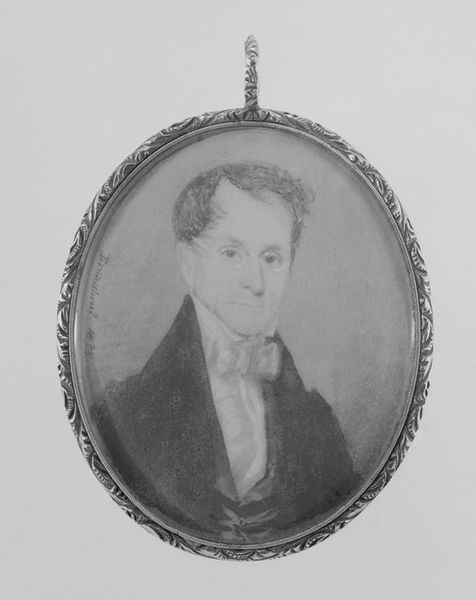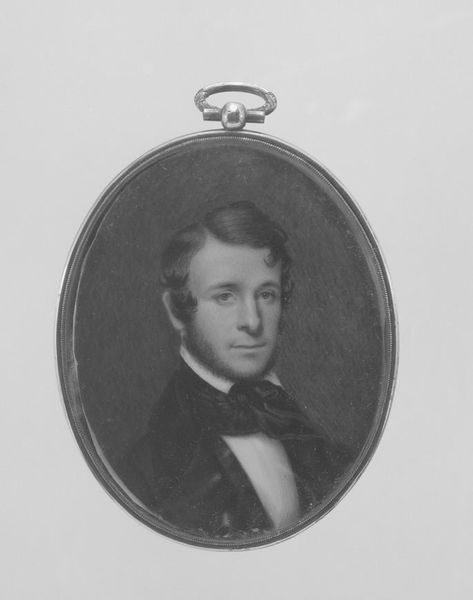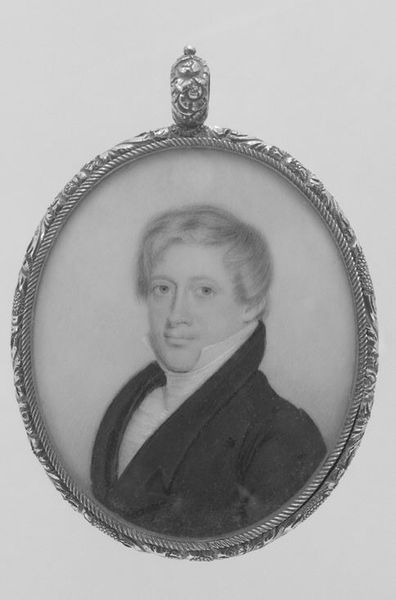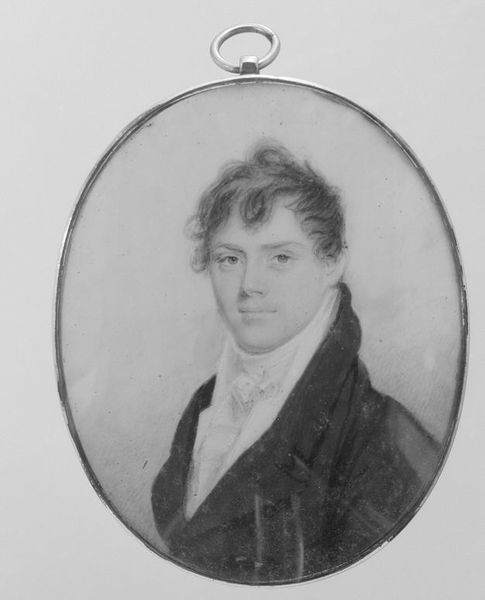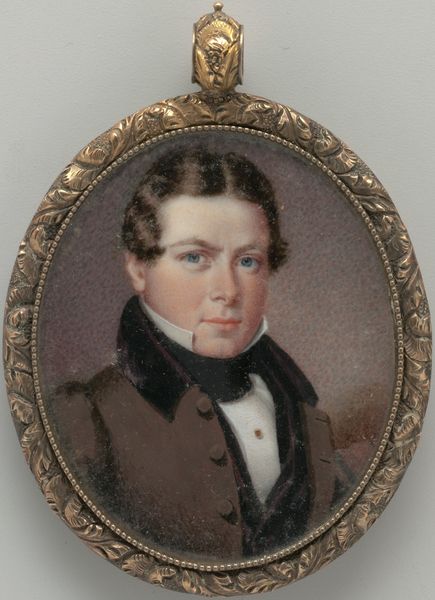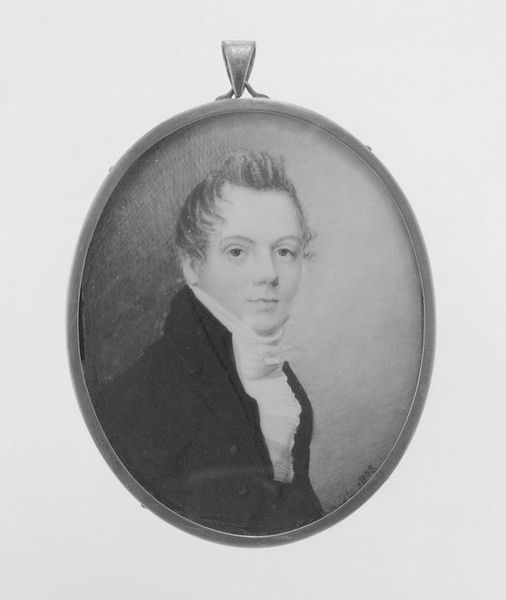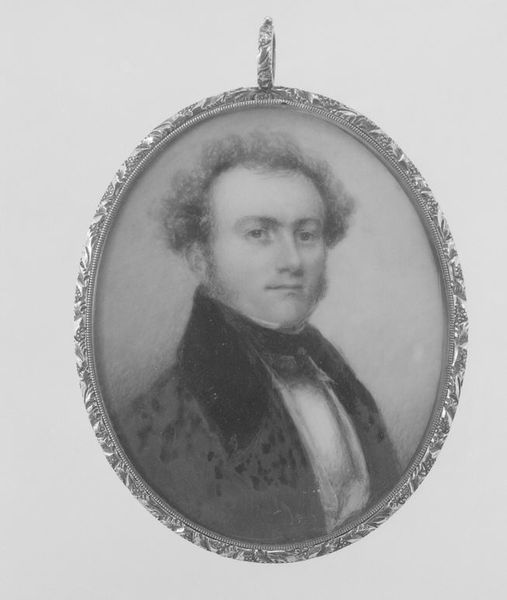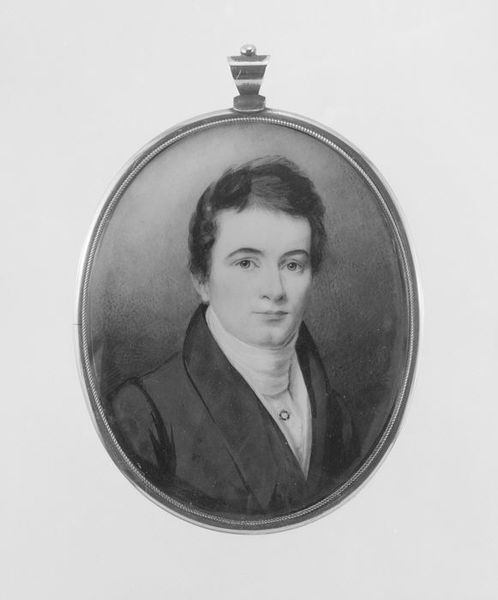
drawing, pencil, graphite
#
portrait
#
drawing
#
pencil
#
graphite
#
miniature
Dimensions: 2 1/16 x 1 5/8 in. (5.2 x 4.2 cm)
Copyright: Public Domain
Editor: Here we have William P. Sheys’ "Portrait of a Gentleman," dating to 1821. It's a miniature drawing, made with pencil and graphite. I'm immediately struck by how delicate it looks, and also how small the artwork must actually be. What do you make of it? Curator: Well, consider the graphite itself. Where did it come from? Its mining and distribution were crucial to the mass production of images in the 19th century, connecting art to global economies. And notice the detail in the silver frame. It wasn’t just functional; it was itself a product of skilled labor, a demonstration of craftsmanship in a rapidly industrializing world. The very act of possessing such a finely wrought object signified a certain social standing. Editor: So the value isn’t just in the gentleman's likeness but in the materials and labor that created the entire object? Curator: Exactly. And think about who commissioned this. The rise of a merchant class fuelled the demand for portrait miniatures like this. The graphite, frame, and the labor involved were all commodities in a burgeoning capitalist system. This miniature reflects a shift away from aristocratic patronage to a market driven by consumer desire. How accessible do you imagine such portraits were? Editor: Not very! But seeing it this way, it changes the way I think about art in this period. It makes you think about who could *afford* art and why. Curator: Precisely. And the next time you view a miniature, reflect not just on the subject but on the means and modes of its production. Editor: I will! I see how art can also serve as an artifact of material and socioeconomic conditions. Thank you.
Comments
No comments
Be the first to comment and join the conversation on the ultimate creative platform.



